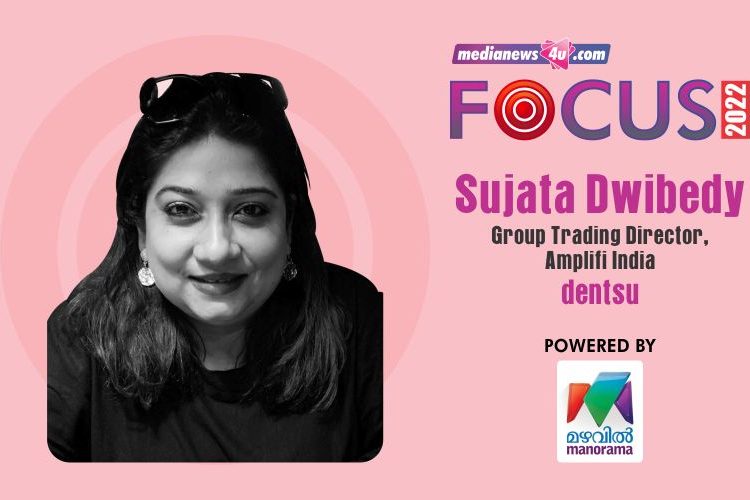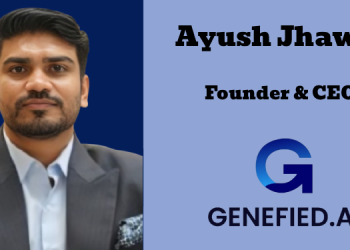The year 2022 would be the year of 5 Cs
By Sujata Dwibedy, Group Trading Director, Amplifi India, dentsu.
The consecutive lockdowns may leave many lasting behavioural changes in the audience. Several media landscape changes have been witnessed. Print which was the 2nd lead media in terms of ad expenditures, dropped down to the 3rd position and digital accelerated like never before to take the 2nd position. OOH has just started reviving now after 2 years and Cinema is still recovering. Radio is hoping to recover by next year. As buyers, we must be truly nimble and agile to negotiate and get the best prices for our clients and yet, navigate through the changes around us.
Cost Efficiencies:
2022 requires a different kind of thinking. Media Partners who have been lying low will come back with a full spade; most of the market will expect inflation. How do the buyers work out in such a situation? We need to focus on the business needs and yet, get the best rates. ROI is the key element of any buying strategy. Delivering the promise through screen agnostic media buys and efficiencies built through data backing would be paramount. Mutual wins in the vendor deals are critical, so finding the sweet spot and negotiating to win would be the mantra. Need to be more responsive, collaborative and ROI-focused.
Consolidation:
Earlier, we had seen Disney and Star merger followed by the Warner and Discovery merger. In 2022, we would see Zee and Sony consolidating fully. We should be prepared for all possibilities in the first year. Accordingly, we should think of a long-term or a short-term strategy. It is extremely critical to have a data-driven approach. Before we arrive at any network strategy as buyers, we must check out all the pros & cons, not all network deals work well and sometimes, they may work wonders. When it is a duopoly or triopoly market buyers must think smartly.
Content Integration & Influencer Marketing:
In the last two years, we saw content integrations and influencer marketing growing tremendously. It has become quite important in the marketing mix for consumer brands. Strategies are built around IPs or AFPs or Brand integrations on existing properties. It is extremely important to measure the deliverables, evaluate the proposals considering the ROI. Influencer marketing has been around for a while now but it has become quite mainstream and there is enough science that goes behind deciding the value & the importance of a partnership. Not only do we use content to drive prospects through the funnel but we also use it to drive continued engagement, keeping them in the customer tunnel, while producing outcomes. Hence, the role of the buyer also becomes extremely critical when it comes to the deliverables and the cost of any content or influencer related marketing.
Connected TV:
India is undergoing a digital revolution and consumers are steadily moving away from traditional linear TV to CTV and OTTs. Also, since data plans are becoming more affordable, India is today one of the biggest markets of internet users. Availability of cheap Smart TVs, diverse and affordable internet content and an untapped demographic group have led to the creation of massive opportunities for CTV adoption and growth. This change presents an untapped advertising opening for brands and advertisers. CTV inherently is more engaging than traditional TVs and brings together the twin strengths of (a) engaging the audience, allowing interactivity and (b) focused targeting through Programmatic advertising. Consumer adoption is happening at a lightning speed but there is no measurement yet. Without integrated measurement metrics, the buyers still need to do enough desk research before they negotiate. There are individual numbers available from the partners and enough understanding on the net. One of the most interesting things that we see is that OTT users who have migrated to TV don’t necessarily consume as much on mobile.
Convergence:
Communication across the world has evolved with the dawn of technology and media. This has emerged due to immense digitalisation and widespread use of the internet. It simply refers to the amalgamation of different types of mass media such as Traditional Media, Print Media, Broadcast Media, New Media and the Internet through digital media platforms. The most relevant example of media convergence is a Smartphone that blends various media, i.e., Print media (e-newspapers, news apps), TV (OTTs, CTV), Audio (radio, music apps) as well as new media (the internet) into a single device that performs various functions from calling and texting to photography, videography, gaming and much more. And then we have newer technologies to deal with such as metaverse to blockchains, AI-led buys and many newer concepts. How prepared are the buyers to understand these and buy such that there is enough ROI and less duplication? All buyers must be on their toes, unlearn and re-learn.

















